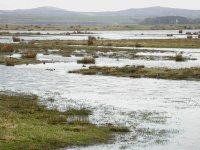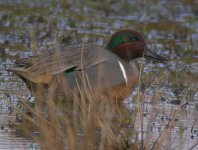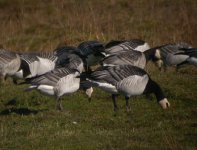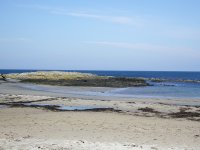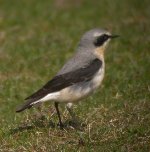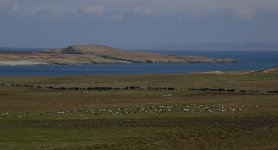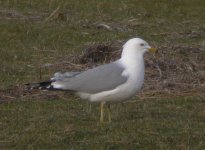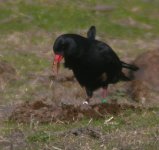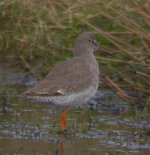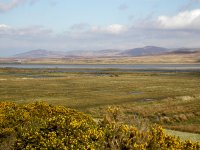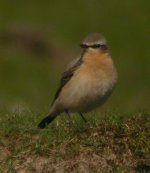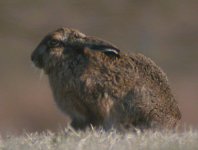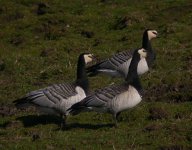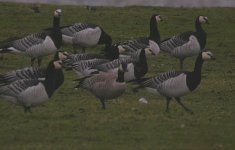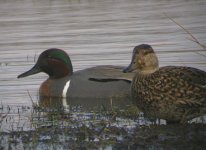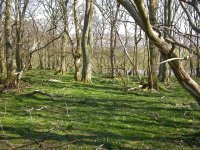
For those that don't know, Islay is a large island off the west coast of Scotland and is one of the finest places for wildlife in Britain. I lived in Islay for a year and a half, so a trip back there is something of a homecoming for me. Below is a report of the birds and other wildlife I saw on a recent six day trip.
Day One: 28th March
I left Aberdeen by train at 5:30 in the morning and connected with the bus for the three and a half hour ride from Glasgow to the ferry terminal at Kennecraig. The ferry runs out through the thin West Loch Tarbert and across the Sound of Gigha. At this time of the year it's often good for divers and other seafowl and I managed to count 19 Great-northern Divers and 6 Red-throateds, along with a few smart looking Black Guillemots and a Little Grebe. Rather more notable was a Black-throated Diver close to the ferry in the loch. The sea between the mainland and Islay was rather devoid of seabirds aside from a few auks but, as the ferry drew up the Sound of Islay, I was delighted to see a Golden Eagle drifting along the heather-clad hills over the island - the first time I've ever seen an eagle from the ferry. I even managed a brief glimpse of an Otter in the as it dived under, flicking its tail upwards as it went.
I got the bus from Port Askaig in the east of Islay and into Bowmore in the centre, the island's capital. Flocks of Greenland White-fronted and Barnacle Geese were strewn across many of the fields. I met up with a friend in Bowmore and we drove around Loch Indaal, the large sealoch that cuts through the centre of the island, stopping to look for birds on the way. A Purple Sandpiper was on the rocky shore and on the mudflats at Bridgend there were 3 first winter Iceland Gulls, showing up even at some distance. A large flock of Scaup was offshore at Blackrock, a little further around the coast and it was just possible to pick out a distant group of 6 Slavonian Grebes, which looked to be coming into breeding plumage.
We stopped briefly at the RSPB reserve at Loch Gruinart and scanned the floods from the roadside viewing platform. A drake Green-winged Teal - a bird that almost always seems to be present here during the winter time - was picked out resting on the far bank of the floods. On the drive up the road to Ardnave a male Hen Harrier danced over the moorland to the side of the road.
Day One: 28th March
I left Aberdeen by train at 5:30 in the morning and connected with the bus for the three and a half hour ride from Glasgow to the ferry terminal at Kennecraig. The ferry runs out through the thin West Loch Tarbert and across the Sound of Gigha. At this time of the year it's often good for divers and other seafowl and I managed to count 19 Great-northern Divers and 6 Red-throateds, along with a few smart looking Black Guillemots and a Little Grebe. Rather more notable was a Black-throated Diver close to the ferry in the loch. The sea between the mainland and Islay was rather devoid of seabirds aside from a few auks but, as the ferry drew up the Sound of Islay, I was delighted to see a Golden Eagle drifting along the heather-clad hills over the island - the first time I've ever seen an eagle from the ferry. I even managed a brief glimpse of an Otter in the as it dived under, flicking its tail upwards as it went.
I got the bus from Port Askaig in the east of Islay and into Bowmore in the centre, the island's capital. Flocks of Greenland White-fronted and Barnacle Geese were strewn across many of the fields. I met up with a friend in Bowmore and we drove around Loch Indaal, the large sealoch that cuts through the centre of the island, stopping to look for birds on the way. A Purple Sandpiper was on the rocky shore and on the mudflats at Bridgend there were 3 first winter Iceland Gulls, showing up even at some distance. A large flock of Scaup was offshore at Blackrock, a little further around the coast and it was just possible to pick out a distant group of 6 Slavonian Grebes, which looked to be coming into breeding plumage.
We stopped briefly at the RSPB reserve at Loch Gruinart and scanned the floods from the roadside viewing platform. A drake Green-winged Teal - a bird that almost always seems to be present here during the winter time - was picked out resting on the far bank of the floods. On the drive up the road to Ardnave a male Hen Harrier danced over the moorland to the side of the road.




